WWII in 3D Blu-ray Movie
HomeWWII in 3D Blu-ray Movie 
Blu-ray 3D + Blu-rayA+E Networks | 2011 | 46 min | Not rated | Jan 24, 2012
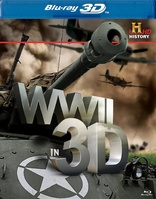
Movie rating
7.4 | / 10 |
Blu-ray rating
| Users | 4.5 | |
| Reviewer | 3.5 | |
| Overall | 3.5 |
Overview
WWII in 3D (2011)
WWII IN 3D tells the story of the war from the rise of the Nazis, their sweep across Europe, the Allied counterattack and the fall of Nazi Germany.
Starring: Martin K.A. MorganNarrator: Tom Wilkinson
| Documentary | 100% |
Specifications
Video
Video codec: MPEG-4 MVC
Video resolution: 1080p
Aspect ratio: 1.78:1
Original aspect ratio: 1.78:1
Audio
English: DTS-HD Master Audio 5.1
Subtitles
English, German, Spanish, Dutch, Mandarin (Simplified), Mandarin (Traditional), Polish
Discs
25GB Blu-ray Disc
Single disc (1 BD)
Blu-ray 3D
Playback
Region free
Review
Rating summary
| Movie | 4.0 | |
| Video | 4.0 | |
| Audio | 4.0 | |
| Extras | 0.0 | |
| Overall | 3.5 |
WWII in 3D Blu-ray Movie Review
Even if you don't have a 3D setup, you might find this intriguing documentary worth watching...
Reviewed by Kenneth Brown January 23, 2012If WWII in 3D initially strikes you as a yet another 3D gimmick or cash-in, you may want to take a moment and brush up on the history of stereoscopic 3-D. Far from the relatively recent innovation many assume it to be, the origins of 3D trace back to Charles Wheatstone, a Victorian scientist who invented the first stereoscope in 1838. That's right: 1838. By the time Hitler's armies were marching across Europe, stereoscopic 3-D was more than a hundred years old. WWII in 3D isn't WWII in HD by way of post-conversion 3D, nor is it a gimmick. 3D played a surprising role in World War II: the Allies relied on 3D viewers to study 3D aerial reconnaissance photographs and plan crucial battles (including the Normandy landings on D-Day), a French photographer used stereoscopic equipment to document the 1944 Liberation of Paris, and the Nazis used 3D and stereoscopy to create a series of photos, propaganda pieces, books and films. WWII in 3D is a bit short at 44-minutes and a bit light on in-depth analysis, but it actually features materials, information and imagery most people, history buffs included, simply don't know exist. That alone separates it from the rest of the History Channel pack.
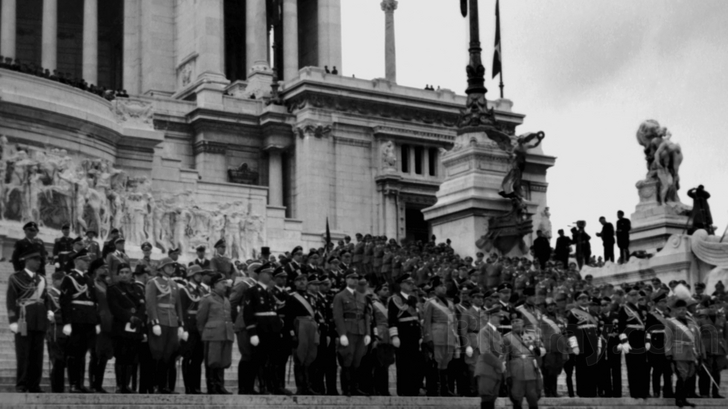
In true History Channel fashion, the documentary itself is an overly dramatic, heavy-handed affair, complete with a faux-eerie score (Rule #1: photos of Hitler must be accompanied by horror-movie music cues), hushed experts prone to overstating the import of particular facts, and the sense that the production is a stone skipping along the surface of a much deeper pond. That said, it's easy enough to adjust to the edge-of-your-seat tone and tenor of the documentary, so long as you can tolerate some of the more poetic flourishes that season Gabriel Rotello's script. ("Until 1938, the 3D photography of Heinrich Hoffman and Otto Schonstein had glossed over the dark side of Hitler's meteoric rise. But the megalomania lurking in these photos would soon erupt across Europe, and Nazi 3D photography would go along for the ride.") Thankfully, narrator Tom Wilkinson (In the Bedroom, Michael Clayton) brings balance to Rotello's histrionic flair with a measured tone and professorial gravity. It helps, of course, that Hitler deserves every horror-movie cue and verbose epithet the History Channel has in its arsenal.
The history, though, remains fascinating throughout. More than a look at stereoscopic 3D's place in World War II, the documentary uses 3D materials to chart the rise and fall of the Third Reich, to reveal the mechanics of a little-known cog in Hitler's propaganda machine, to explore the dictator's deployment of artistic totalitarianism and mass communication, to introduce the Allies' very different use of stereoscopy, and to highlight the power photographs and films still hold, even some seventy-five-years after they were originally shot. The abundance and quality of the 3D photographs available -- the majority of which were procured from private collections and previously classified archives -- will even inspire some to pause the film and study every inch of the screen. No hyperbole required; I did just that on a number of occasions. Granted, watching historians don their own 3D glasses and react to the same photos is about as silly as it comes, adds next to nothing to the experience, and amounts to shamelessly up-selling a documentary that's already being enjoyed. But such cutaways are fortunately kept to a reasonable minimum, devoting plenty of time to the high definition meat-n-potatoes of WWII in 3D.
WWII in 3D Blu-ray Movie, Video Quality 
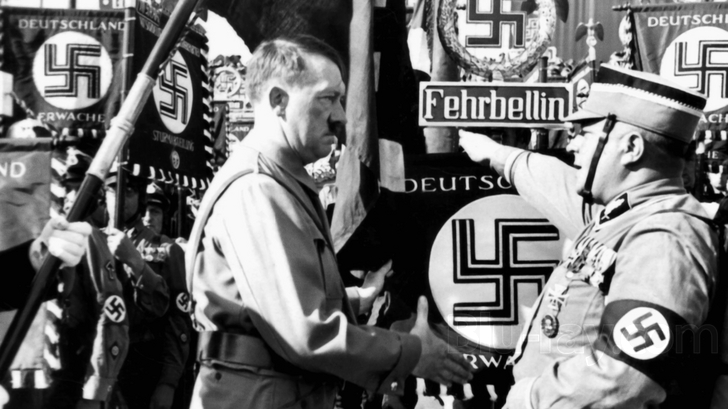
A&E's 1080p/MVC-encoded 3D presentation is an excellent one, with only a few mishaps and oddities to endure. But more on that in a bit. The array of archive photographs deliver again and again, even if viewing the images in 3D isn't quite the revelation Wilkinson and the on-screen historians insist it is. The clarity of the photos varies -- taking a small toll on the consistency of the quote-unquote 3D effect -- but nothing emerges as a distraction. The picture isn't prone to ghosting (which is a product of individual displays and glasses anyway), the 3D photographs are in near-pristine condition, and you couldn't milk more detail out of the images if you tried. The 3D experience extends into the rest of the film as well, retaining the same sense of convincing depth whenever an expert or historian sits down to chat about the use of stereoscopic equipment and propaganda in World War II. The only exception being the occasional 2D photo or snippet of archive footage, which obviously looks flat compared to the rest of the presentation. But that's neither here nor there. The impact of the 3D imagery is what you're paying for, and the impact of the 3D imagery is where you'll get your money's worth. Get used to studying a paused screen, because you're about to do it. A lot. Edge definition is as crisp and clean as the photographs allow, textures are clearly visible when apparent, black levels are rich and satisfying, contrast has been fine-tuned to perfection, and midrange grays are striking.
The centerpiece of WWII in 3D, though, is a newly restored (albeit incredibly short) Nazi propaganda film, never before seen by the public, shot in 3D in 1943. In it, German soldiers aim and fire an 88mm flak gun at enemy aircraft using a stereoscopic range finder. The content makes it a less-than-thrilling discovery, but the 3D presentation doesn't falter. It isn't as absorbing as the still 3D photography, but A&E's transfer does its job and does it well. The brief 3D film footage is followed by a series of Ally aerial reconnaissance photographs, and it becomes very clear how the Allied forces found the 3D photos helpful when planning ground assaults and invasions. Again, the MVC-encoded 3D presentation doesn't disappoint. If anything disappoints it's the uneven noise that sometimes creeps into the expert and historian interviews, the minor artifacting that haunts an admittedly negligible number of the 21st century segments, and the average fine detail present in many of the modern-day sequences. The recently shot footage doesn't look bad, not by any stretch of the imagination, but it isn't very noteworthy either. Be that as it may, those who purchase WWII in 3D won't have a lot to complain about, and will feel their money has been well spent.
WWII in 3D Blu-ray Movie, Audio Quality 
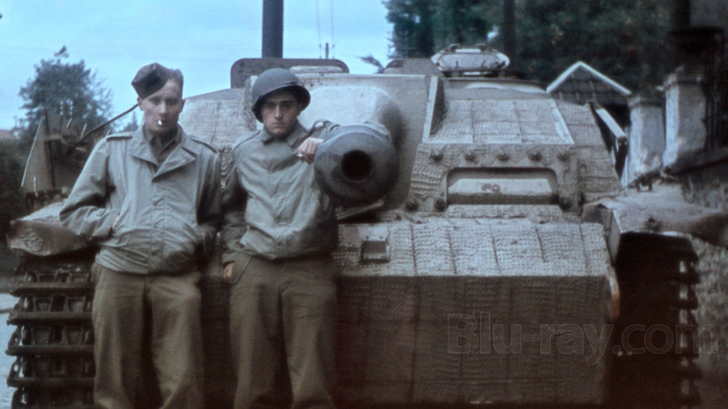
A&E's proficient DTS-HD Master Audio 5.1 surround track isn't exactly extraordinary, but it's more than serviceable. Tom Wilkinson's narration is clear, grounded and perfectly intelligible, as are the voices of the various experts, historians and witnesses featured in the film. Sound effects are almost ambient in nature, but considering they aren't native to the images and footage on display, it's more than appropriate. Likewise, the ever-present score is restrained but respectful, knowing (and maintaining) its place in the mix. LFE output, meanwhile, is cautious but strong, rear speaker activity is subdued but subtly enveloping, and dynamics are on point. The experience is front-heavy on the whole and Wilkinson's narration lords over the soundscape, sure. But that's the nature of the documentary game. All things considered, WWII in 3D conducts itself with sonic honor and never allows the audio to overwhelm or detract from the 3D imagery in any way.
WWII in 3D Blu-ray Movie, Special Features and Extras 

WWII in 3D doesn't include any special features.
WWII in 3D Blu-ray Movie, Overall Score and Recommendation 
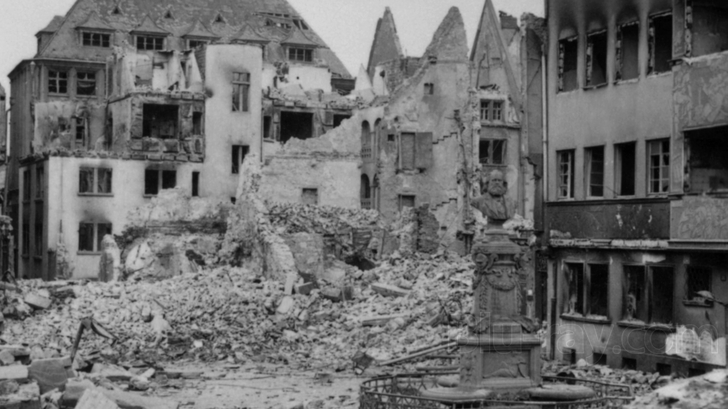
WWII in 3D. It sounds like a gimmick. It sounds like a 3D cash-in. But that couldn't be farther from the truth. An overview of the use of stereoscopic 3D in World War II and its place in both the Axis and Allies' strategies, WWII in 3D is actually a captivating glimpse into a little-known aspect of the war. And considering how many documentaries have been made about WWII, that's saying a lot. A&E's Blu-ray release makes it even more fascinating thanks to a solid video transfer, a gripping 3D presentation and a decidedly decent DTS-HD Master Audio track. Ignore the title, shelve your preconceived notions and give this little History Channel gem a shot.
Similar titles
Similar titles you might also like

History of the World in Two Hours 3D
2011

Titanic: 100 Years in 3D
History Channel
2011

Arabia 3D
IMAX
2010

Ocean Wonderland 3D
2003

Dinosaurs Alive!
IMAX
2007

Wild Ocean
IMAX
2008

3D Safari: Africa
2011

Sharks 3D
2004

The Universe: The Complete Season Seven
Ancient Mysteries Solved
2013

Dolphins and Whales: Tribes of the Ocean 3D
2008

IMAX: Hubble 3D
2010

Mummies: Secret of the Pharaohs
IMAX
2007

Under the Sea
IMAX
2009

Legends of Flight 3D
IMAX
2010

Deep Sea 3D
IMAX
2006

Flying Monsters 3D
2011

The Ultimate Wave: Tahiti 3D
IMAX
2010

James Cameron's Deepsea Challenge 3D
2014

Sea Rex 3D: Journey to a Prehistoric World
2010

The Universe in 3D: A Whole New Dimension
2013